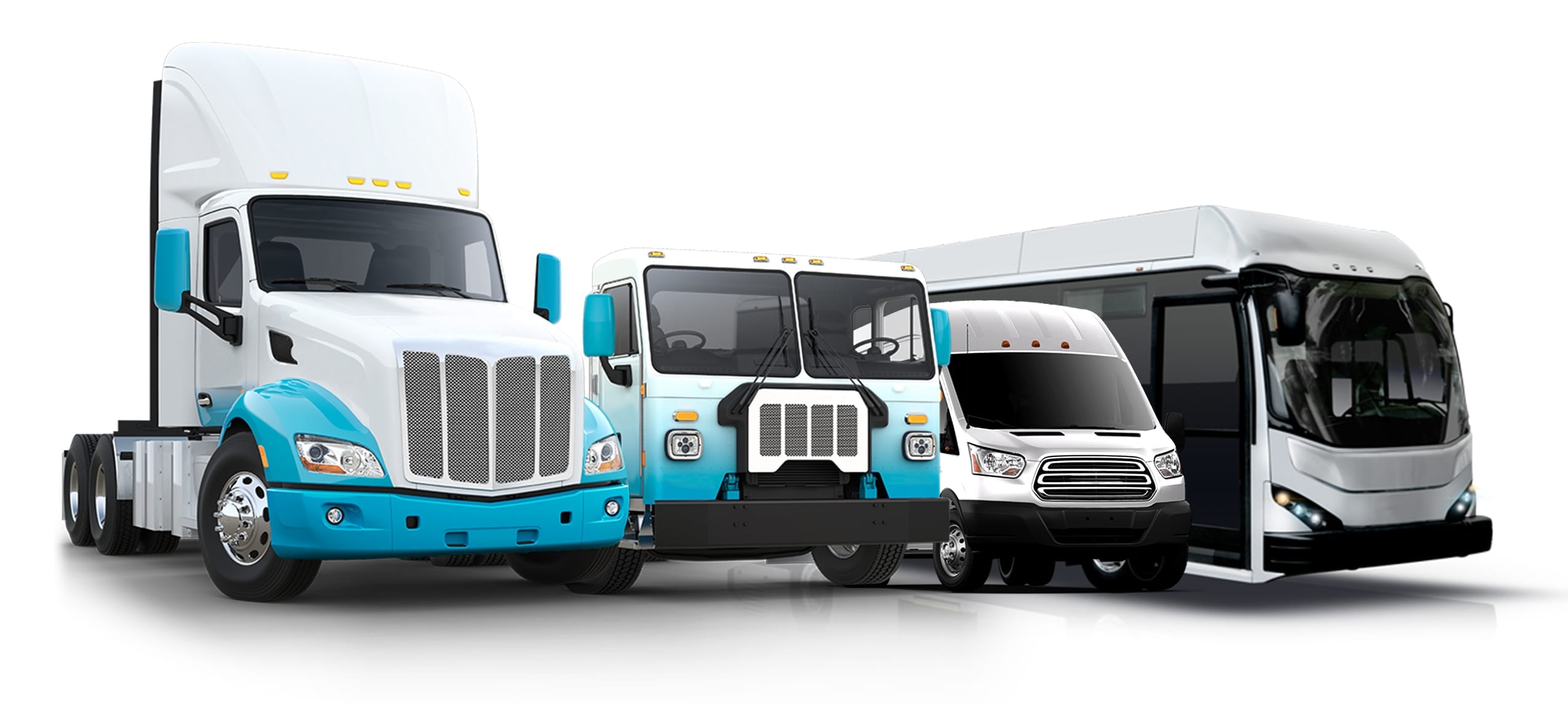In partnership with: Pacific Gas & Electric Company (PG&E)
Fleets looking to reduce the cost of transitioning to medium- and heavy-duty electric vehicles (EVs) can look no further than California’s Low Carbon Fuel Standard (LCFS). The LCFS is a market-based, fuel-neutral program designed to reduce the carbon content of traditional gasoline and diesel transportation fuels, with the goal of decreasing the “carbon intensity” of all transportation fuels by 20% by 2030. The LCFS, administered by the California Air Resources Board (CARB), is one of the state’s many strategies to reduce its greenhouse gas (GHG) footprint and help meet its climate goals.
The LCFS is a market-based, fuel-neutral program designed to decrease the “carbon intensity” of all transportation fuels.
To encourage growth of the clean-fuel industry, LCFS offers an additional revenue source for California fleets operating emission-reducing vehicles and technology like that of EVs. In the LCFS, a single credit represents one metric ton (MT) of GHG reductions. The value of that ton is set by the market. Since June 2018, credits have traded between $180 to $210/MT. To see an analysis of how these credits are derived, download our free fact sheet on Earning Revenue with LCFS or watch our recent webinar on California’s Low Carbon Fuel Standard (LCFS).
Reducing Total Cost of Ownership with LCFS
Fleets operating EVs are well positioned to benefit from California’s LCFS program. For example, a fleet of 25 Class 6 electric trucks has the potential to generate $175,000 annually in LCFS credits and $1.75 million over a ten-year useful life of the fleet. In addition to the already reduced maintenance and fuel costs realized by operating EVs, fleets can use this additional revenue to further reduce the total cost of ownership (TCO) of EVs.
Fleets operating EVs are well positioned to benefit from California’s LCFS program.
Under the program, the owner of the fuel is typically the party that earns the credits. So, for an electric fleet, the key to generating revenue with LCFS is to own or operate the charging equipment used to “fuel” the EVs. The revenue earned can be used by fleet operators to purchase new EVs, charging infrastructure, maintenance, electricity costs, and administrative fees related to program compliance.
How a fleet uses the LCFS revenue it generates must be reported to CARB annually. If a fleet doesn’t use all of its LCFS revenue, it can be rolled over into future years.
Utilities are a Fleet’s LCFS Partner
A key requirement of the LCFS program is that the electricity a fleet measures to earn LCFS credits must only be used for the vehicles, meaning it must be monitored and tallied separately from non-fleet operations. To measure a fleet’s electricity usage easily and accurately, it is critical to install a separate meter solely used by the vehicles.
The key to generating revenue with LCFS is for a fleet to own or operate the charging equipment used to “fuel” the EVs.
This can be accomplished from a dedicated meter installed by the utility used only for EV charging. It’s critical that fleets assess what they need to do to install EV chargers early and PG&E can be an essential partner in this process.
As part of PG&E’s EV Fleet program and through PG&E’s new Business EV rates, fleet customers receive support to set up a separate meter for vehicles—effectively making the fleet primed to also start generating LCFS credit. PG&E, and electric utilities across the state, also offer many additional resources and incentives to support upgrades to charging infrastructure. Fleets that engage with the utility early on to install charging infrastructure will also receive additional design and financial assistance that could accelerate a return on investment with EV deployment.
Getting Started with LCFS and Planning Ahead
Once the EV infrastructure is installed, the process to begin generating LCFS credits isn’t complicated. Fleets can register their company as an “Opt-In Entity” and register their “Fuel Supply Equipment” with CARB online.
Getting set up with LCFS is the first step to begin earning revenue from operating EVs. To continue seeing financial growth, fleets can plan ahead for future EV deployments and forecast their power needs. To begin planning, fleets can consider
- What kind of EVs may be purchased,
- How many will charge at any given time,
- What time of day they will charge, and
- How fast they will need to charge.
Once the EV infrastructure is installed, the process to begin generating LCFS credits isn’t complicated.
Getting a sense of the vehicle fleet and its possible charging pattern will inform right sizing the infrastructure for current and future deployments. PG&E works with fleets even at these early stages to determine actual energy usage demands, plan an accurate project timeline, and to connect fleets with resources, grants, and additional incentives to help reduce the cost of vehicle purchases and infrastructure.
Electrification of the transportation sector is happening now, and early adopters will be best positioned to take advantage of resources and incentives to help medium- and heavy-duty fleets deploy zero emission vehicles, including the LCFS program.
PG&E is here to help fleet customers get started on the road to zero emissions. Fleets operating in PG&E’s service area can start today by contacting an EV Fleet specialist or visiting pge.com/evfleet to get access to resources that can help at any stage of the electrification process.



